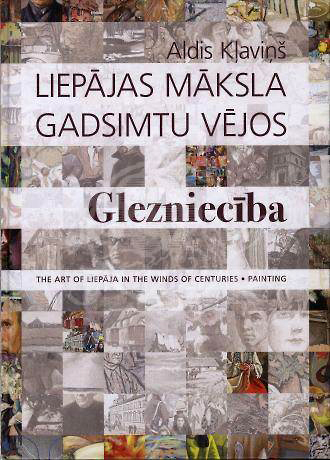|
|
 A Demonstration Lesson in Local Patriotism A Demonstration Lesson in Local Patriotism Santa Mazika, Art Critic Aldis Kļaviņš. The Art of Liepāja through the Winds of the Centuries: Painting (Rīga, Poligrāfijas infocentrs, 2008) | |
| This book by the artist, stage designer and associate professor at the Liepāja University, Aldis Kļaviņš, is the first major study dedicated to painters whose creative activity is related to Liepāja. Two more books are in the pipeline: Drawings, graphic art and sculpture and Masters of Applied Art, Stage Design and Design. The publication is an album organized into nine decades (1918-2008), which, besides reproductions of works by Liepāja artists, includes the author's remarks about the respective time, and brief encyclopedic information on the authors of the works reproduced in the album. The cultural life of the city is mostly presented through the author's personal impressions and articles from local press publications (Kurzemes Vārds, Komunists). This book can be analysed in "a tolerant, objective" manner and "in the spirit of local patriotism" as an album on painting rich in content, and which also, due to its English translation, will doubtless serve as excellent promotional material for the city. The album will also be a useful source of visual materials for researchers of Latvian art, because it contains works which are not normally accessible (reproductions of works held in the Liepāja Art Gallery and in artists' private collections.) | |
 Aldis Kļaviņš. The Art of Liepāja through the Winds of the Centuries: Painting. Rīga, Poligrāfijas infocentrs, 2008. 275 pages: il. | |
| However, it still has some way to go to reach the status of being an essential document of the epoch. Possibly in the next editions it may be worthwhile to engage more professional people, who would not only help with the selection of works but also, with their knowledge of history, add more value to the text. The album could be further improved with the involvement of an editor and a translator knowledgeable about art, as the field has its specific terminology.
It is a pity that the author's writing in other chapters is not as free-flowing and unrestrained as in the chapter on the decade from 1958 to 1967, and as in-depth as the one on the decade from 1938 to 1947. The narrative could be of more value for a wider circle of readers if it were to abound not only in legends and amusing comments, but also in historically accurate facts (what are "the city hotel" and "the new art salon"? (p. 40)). The album makes no mention of the youngest generation of painters (for example, Jānis Viņķelis), but only of their teachers. Although the bibliography list containing all the most significant articles in the local press is of some worth, unfortunately it makes no mention of any publications after 1980, and none that would have appeared in periodicals other than the ones mentioned. This impressive publication can be rated as a significant and compact album on the art life of the city. However, honestly speaking, art itself has long since stepped out of its local setting, that historical form of Society for the Promotion of the Arts - so many eons ago - no longer relevant to the contemporary nature of the creative process. Artists earn their living not only by teaching, but also in other sufficiently creative occupations. Undeniable, and even more interesting is the fact that this publication on the art life of the city actually tells more than we are able to see and read between the covers. /Translator into English: Sarmīte Lietuviete/ | |
| go back | |







